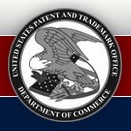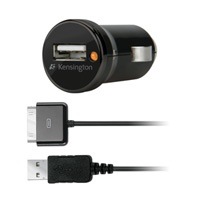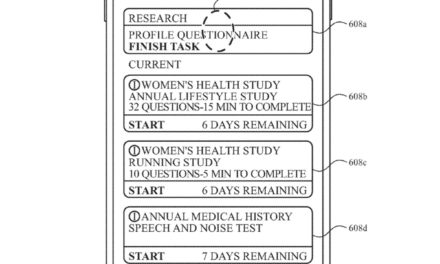Apple has won several patents by the U.S. Patent & Trademark Office. Following is a summary of each.
Patent number 8111751 is for encoding video. Some embodiments of the invention provide a method for encoding a video signal that is formed by a series of successive images. Each image includes several sections, and each section has a set of image values. To encode a particular section of a particular image, the method initially partitions the particular section into several sub-sections. For each of at least two particular sub-sections, the method then computes a statistical parameter regarding the image values of the particular sub-section.
The method compares the computed statistical parameters, and based on the comparison, selects an encoding technique from a set of encoding techniques to encode the particular section. In some embodiments, the set of encoding schemes includes a first scheme that encodes the selected section without reference to any other section of any other image, and a second scheme that encodes the selected section by reference to at least one other section. The inventors are Thomas Pun, Roger Kumar, Xiaochun Nie and Hsi-Jung Wu.
Patent number 8111752 involves encoding mode pruning during video encoding. A method for encoding a first set of pixels in a first image in a sequence of images is described. From a set of encoding modes, the method selects a first mode for encoding the first set of pixels. The method then determines whether encoding the first set of pixels in the first mode satisfies a set of quality criteria. The method foregoes encoding the first set of pixels in a second mode from the set of encoding modes, when the first mode encoding satisfies the set of quality criteria.
The method also provides a video encoding method that examines several different methods for encoding a set of pixels in a first image. From a list of possible encoding modes, the method eliminates a set of encoding modes that are not likely to provide a suitable encoding solution. The method then examines different encoding solutions based on the remaining encoding modes in the list. The inventors are Roger Kumar, Thomas Pun and Hsi Jung Wu.
Patent number 8111837 is for data-driven media management within an electronic device. A method and apparatus for intelligently routing and managing audio signals within an electronic device is disclosed. The routing is responsive to a set of logical and physical policies which are stored in data tables which can be updated as needed. The inventors are Anthony J. Guetta and Andrew Rostaing.
Patent number 8111232 involves an LCD electrode arrangement. Systems, devices, and methods for reducing direct current bias and/or enabling a simplified manner of polarity inversion in liquid crystal display (LCD) devices are provided. In accordance with one embodiment, a device may include a processor, a memory device, and a liquid crystal display having a pixel array including rows and columns of pixels.
Each pixel of the pixel array may include a pixel electrode separated from a common electrode by a dielectric passivation layer, and may include a transistor to provide a data signal when the transistor is activated. The pixel array is configured such that a neutral amount of direct current bias is generated on the passivation layer when each row of pixels is activated.
The common electrodes of certain pixels may be disposed above their respective pixel electrodes, while the common electrodes of certain other pixels may be disposed below their respective pixel electrodes. The inventors are Ming Xu, Cheng Chen, Shih Chang Chang, Mingxia Gu and John Z. Zhong.
Patent number 8111522 is for switch structures for use on printed circuit boards. The patent involves an electrical contact area on a printed circuit board (“PCB”), that would otherwise be subject to abrasion and possibly also corrosion, can be protected by covering it with another, more durable contact structure that is bonded to the first-mentioned contact area using an anistropic conductive adhesive (“ACA”). The more durable contact structure may include a member of PCB material or the like with electrically connected electrical contacts on its upper and lower surfaces.
At least the upper one of these contacts (which is exposed for the service that involves possible abrasion and/or corrosion) may be given high durability by plating it with hard gold. The lower of these contacts is adhered to the main PCB via the above-mentioned ACA. The inventors are Fletcher R. Rothkopf, Teodor Dabov, Richard Hung Minh Dinh, Jun Sun and Michael Rosenblatt.
Patent number 8111842 involves filter adaptation based on volume setting for certification enhancement in a handheld wireless device. Per the patent, a handheld wireless communications device has an adjustable volume setting. The communications device also has a downlink audio processor containing a digital audio filter. Storage in the device contains a first set of filter coefficients that configure the filter to enable the device to pass a wireless communications device certification process while sacrificing sound quality, at a low volume setting.
The storage also contains a second set of filter coefficients that configure the filter to enhance sound quality while sacrificing passing the wireless communications device certification process, at a high volume setting. Other embodiments are also described and claimed. Chad G. Seguin is the inventor.
Patent number 8111537 is for a trickle sync protocol. Among other things, techniques and systems are disclosed for providing trickle syncing. In one aspect, a system includes a data repository to store one or more data records and a server in communication with the data repository. The server is designed to access the data repository in response to a user request to perform at least one of the following: access the one or more data records, add a data record, and modify the one or more data records.
The system also includes a client application in communication with the server. The client application is designed to receive the user request through a client process; encapsulate a protocol that provides communications between the client process and the server; and forward the received user request to the server using the encapsulated protocol. The inventors are Carsten Guenther and Brendan A. McCarthy.
Patent number 8112701 involves reference adding behavior in formula editing mode. Reference adding behavior in a formula editing mode is disclosed. In some embodiments, in response to receiving an indication of a selection of a cell, a reference to the selected cell is inserted into a formula being entered into a host cell if the host cell is not a header cell, and a reference to a row or column with which the selected cell is associated is inserted into a formula being entered into a host cell if the host cell is a header cell. The inventors are Yaniv Gur, Jay Christopher Capela, Peter William Rapp, Roger Rock Rosner and Christopher Douglas Weeldreyer.
Patent number 8112130 is for a receiver acoustic system. A mobile communications device has an outer housing with a front wall in which an acoustic opening is formed. A tub is disposed inside the housing, wherein an acoustic opening is formed in a bottom of the tub and is positioned to be aligned with the acoustic opening in the outer housing. A receiver is disposed within the tub so that a sound port hole of the receiver faces an inside face of the tub and is aligned with the acoustic openings in the outer housing and in the tub.
A plate piece is disposed between an inside face of the housing and the face of the receiver in which the sound port hole is formed. An acoustic opening is formed in the plate piece and positioned to be aligned with the sound port hole of the receiver and the acoustic openings in the outer housing and in the tub. Other embodiments are also described. The inventors are Adam D. Mittleman, Kenneth A. Jenks and Chad G. Seguin.
Patent number 8112360 involves digital media acquisition using credit. Improved techniques and systems to facilitate use of credit to acquire digital media assets from a network-based media server are disclosed. Digital media assets can include media items such as songs, albums, images, slideshows, audiobooks, podcasts, or videos. A user can acquire credit in a variety of different ways including, for example, through redeeming a credit invitation. Once a user has available credit by whatever means, the user can acquire one or more digital media assets from the network-based media server using his/her available credit. In one embodiment, the credit is provided as item credits, whereby each item credit can be used to acquire a selected digital media asset.
However, not all of the digital media assets available from the network-based media server are permitted to be acquired using item credits. In some cases, the digital media assets that can be acquired with credit can be designated by their cost. The country of origin of the user and/or the type of media asset can also influence the digital media assets that can be acquired using item credits. Thomas Burkholder is the inventor.




